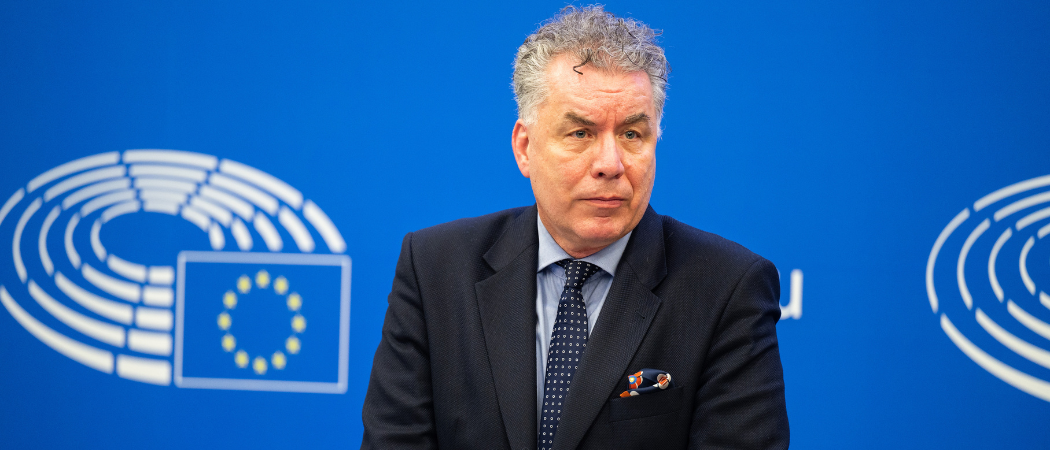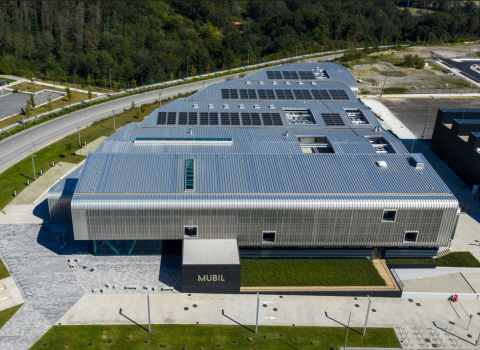The Parliament and Council have agreed on the Net-Zero Industry Act. The aim is to boost domestic green tech, but unlike the US which is pumping $369B into its sector, there will be no money attached to the EU act

Christian Ehler MEP, Parliament’s lead negotiator on the Net-Zero Industry Act. Photo: Emilie Gomez / European Union
EU negotiators from the Parliament and the Council reached a provisional agreement on the Net-Zero Industry Act on Tuesday, to support domestic production of the technologies such as solar panels, fuel cells and electrolysers needed to achieve Europe’s climate goals.
“For the first time, Europe is reacting to the IRA,” said Christian Ehler MEP, Parliament’s lead negotiator, referring to the US inflation reduction act under which $369 billion is being funnelled into the US green tech sector.
Agreement on the net-zero act is also a first step in providing “the business case for industrial decarbonisation” and in implementing the Green Deal beyond simply a regulatory framework, Ehler said.
The act sets a target of producing 40% of the net-zero technologies the EU requires by 2030. Rather than any subsidies, it aims encourage investment by simplifying the permitting process for strategic projects, updating public procurement rules to favour European producers, and supporting the development of regional clusters.
It will foster innovation by promoting the use of regulatory sandboxes where new technologies can be developed, tested and validated in near-real but controlled environments.
“If Europe wants to play a lead role in the clean energy transition, we need to ensure a strong European manufacturing capacity and create better conditions for investing in new projects,” said energy commissioner, Kadri Simson.
The political agreement “gives the EU the necessary framework to ensure that our net-zero supply chains are resilient and competitive at home and beyond,” she said.
STEP agreement
While the act does not allocate any additional funding for projects, MEPs had hoped to link the text to the Strategic Technologies for Europe Platform (STEP), which is the Commission’s proposal to reinforce and steer EU funds towards critical technologies, including clean tech.
By the time negotiators reached a deal on the revision to the EU’s long-term budget on Tuesday evening, however, the fresh funding allocated to STEP had fallen from €10 billion to €1.5 billion, all of which will go to the European Defence Fund.
STEP will therefore have to mobilise existing funding from other sources, including cohesion policy funds, InvestEU, and Horizon Europe.
Parliament also pushed for a proportion of member state revenues from the Emissions Trading System (ETS) to be used to support net-zero projects. MEPs succeeded in including this in a recital, a non-binding, explanatory section of the act.
This “paves the way for a discussion on the extent to which member states are going to use ETS revenues,” Ehler said. “It's fairly clear that without using them, we're not going to achieve our goals.”
List of technologies
Negotiators for the net-zero act agreed to publish a single list of key technologies, whereas both the Commission and the Council proposed drawing up two lists, with one group considered “strategic” and therefore eligible for greater support.
The final list includes technologies such as solar panels, wind turbines, fuel cells, electrolysers, batteries, and grid technologies.
Nuclear energy also made the cut despite opposition from certain member states, and the text makes no distinction between innovative small modular reactors (SMRs) and conventional reactors.
The EU is aiming to reach net-zero emissions by 2050, and is in the process of setting its target for 2040. The Commission wants to aim for a 90% reduction in emissions compared to 1990 levels.
Nuclear will be one of the solutions to achieving that goal, but “it is up to member states to decide to what extent it is part of their energy mix,” Ehler said.
The final list of technologies is broader than the Commission’s proposal, but member states will decide which of these to support.
“This means technologies with a proven track-record for quick decarbonisation, such as solar and wind, are placed on the same footing as unproven and expensive ones, such as nuclear fission and Carbon Capture and Storage (CCS),” said Camille Maury, senior policy officer at the World Wide Fund for Nature.
Quicker permitting
The new legislation sets a time limit of 18 months for delivering a permit for large net-zero technology manufacturing projects, and 12 months for smaller projects.
The act will promote the development of “net-zero acceleration valleys”, regional clusters of companies involved in a certain technology, to support reindustrialisation and further streamline administrative procedures.
Tackling the administrative burden sends an important signal to industry, Ehler said. “Otherwise, they might find the financial tax breaks in the US really attractive.”
Member states will also have to consider non-price criteria related to sustainability and resilience in public procurement and auctions to deploy renewable energy technologies. These must apply to at least 30% of the volume auctioned, according to the agreement.
The resilience criteria will apply when a non-EU country accounts for more than 50% of the supply of a specific net-zero technology. Together with the other measures, this is designed to support European manufacturing and avoid repeating what happened with solar panels, where the EU is heavily reliant on imports from China.
The agreement must now be formally approved by the co-legislators, starting with a vote in the Parliament’s industry (ITRE) committee on 14 February.





 A unique international forum for public research organisations and companies to connect their external engagement with strategic interests around their R&D system.
A unique international forum for public research organisations and companies to connect their external engagement with strategic interests around their R&D system.